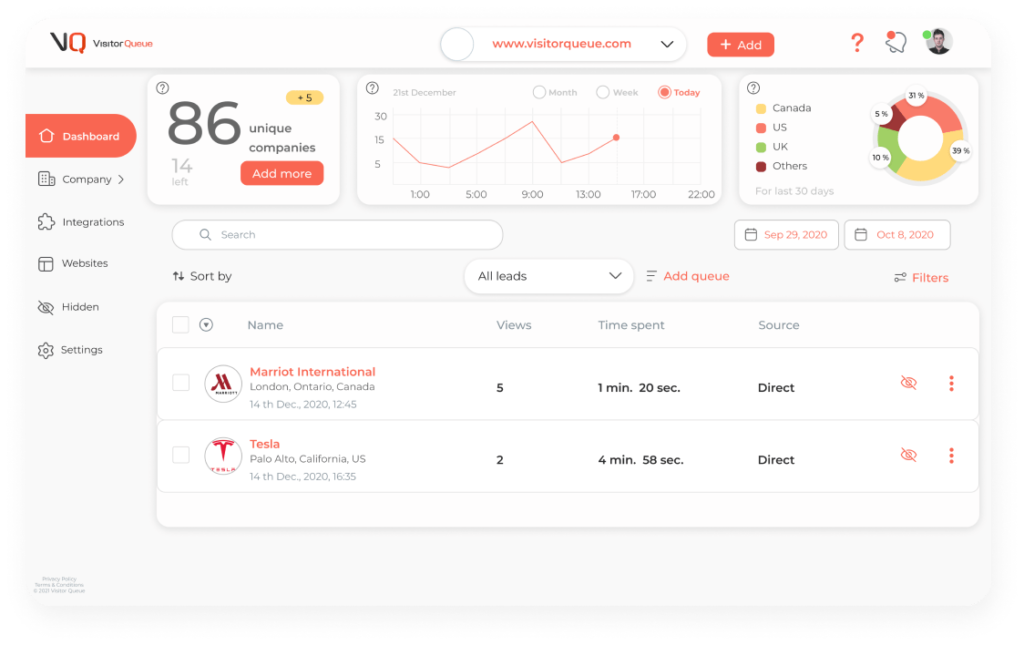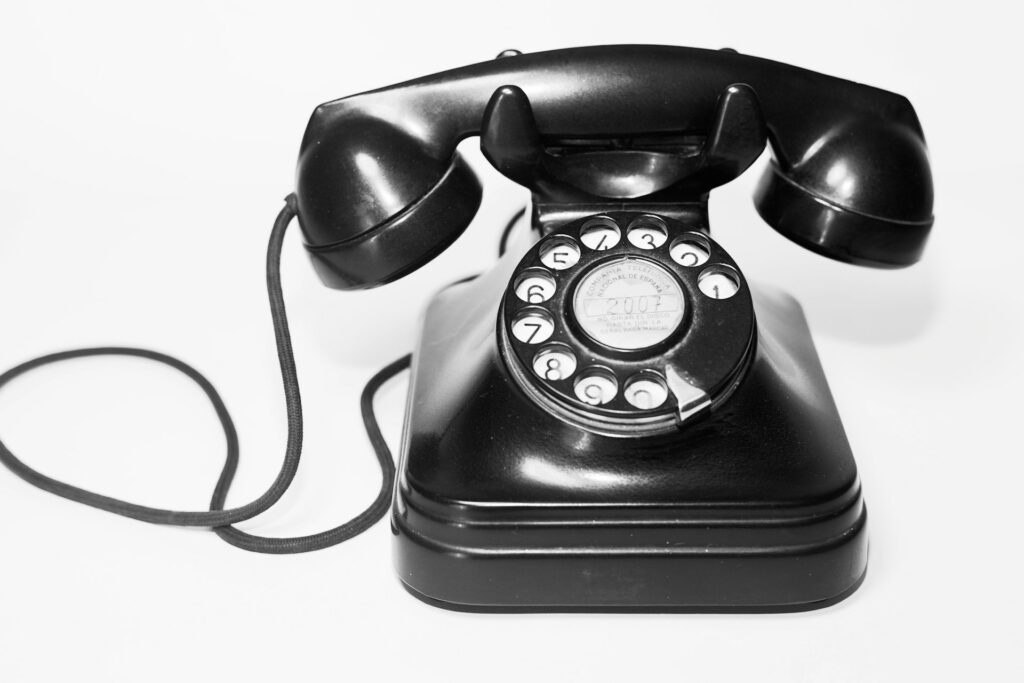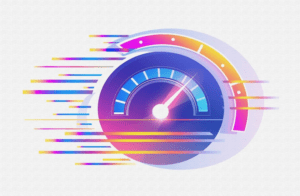While some companies may argue that cold calling is outdated, it continues to drive results when done right. However, it’s no secret that converting a cold call into a sale can be challenging, even for the most experienced salespeople. If you’re looking to improve your cold calling conversion rates, you’re in the right place. Before we jump right into how to improve your conversion rates, let’s go over the basics of cold calling.
Cold Calling 101
Cold calling is the process of reaching out to potential customers or clients who have not previously interacted with your business. Typically, these prospects haven’t expressed interest in your product or service, which makes it a “cold” interaction. Cold calling is a common practice in sales, often used by sales representatives or telemarketers to introduce a company’s offering and hopefully move the prospect further down the sales funnel. The goal of a cold call isn’t necessarily to make an immediate sale. Instead, it’s often about creating interest, building rapport, and laying the groundwork for future conversations. A successful cold call could lead to a follow-up meeting, a product demo, or further qualification of a lead.
How to Measure Cold Calling Conversion Rates
Before diving into tips on improving conversion rates, it’s essential to understand how to measure them accurately. Cold calling conversion rates give you an insight into the success of your calls and allow you to assess the effectiveness of your sales strategy. Here are the key metrics you should consider when measuring cold calling conversion rates:
Call-to-Appointment Ratio
Your call-to-appointment ratio measures the percentage of cold calls that result in a scheduled meeting or appointment. For example, if you make 100 calls and secure 10 appointments, your call-to-appointment ratio is 10%.
Call-to-Opportunity Ratio
This metric looks at how many calls result in a sales opportunity, such as moving the prospect to the next stage of the sales process. If you make 50 calls and create 5 new sales opportunities, your call-to-opportunity ratio is 10%.
Average Talk Time
Measuring how long calls last and how many prospects agree to follow up can provide insights into the quality of your conversations. This can also be helpful for training future salespeople and creating talking points that meet a target talk time. Now that you know how to measure success, let’s dive into how to improve your cold calling conversion rates.

Tips on How to Improve Your Cold Calling Conversion Rates
Now that you’re familiar with the basics of cold calling, let’s go over how to improve your cold calling conversion rates.
Research Your Prospects Before Calling
One of the biggest mistakes in cold calling is calling someone without knowing anything about them. With so much information available online, it’s easy to research your prospects before making contact. Look at their LinkedIn profile, company website, or any public-facing information that can provide insight into their needs and interests. Understanding a prospect’s pain points, industry challenges, and potential needs allows you to tailor your conversation and increase the likelihood of engagement. This personalized approach makes it easier to create a meaningful connection and boosts your chances of conversion.
Build a Strong Opening Statement
Your opening line sets the tone for the entire conversation. In many cases, prospects decide whether they want to continue the call within the first few seconds, so it’s crucial to make a strong first impression. Avoid generic or scripted intros like, “Hi, my name is [Name], and I’m calling from [Company].” Instead, capture their attention with a compelling hook or value proposition. For example, you could say, “Hi [Prospect], I noticed that your company has been growing rapidly. I wanted to share how we’ve helped similar businesses optimize their processes and increase efficiency. Do you have a moment to chat?”. A good opening statement should immediately address a potential pain point or benefit to the prospect. This shows that you’ve done your homework and are offering value, not just making a random sales call.
Ask Open Ended Questions
Rather than launching into a sales pitch, focus on asking open-ended questions that encourage conversation. Open-ended questions cannot be answered with a simple “yes” or “no,” which encourages the prospect to elaborate on their needs and challenges. For example, ask questions like, “What’s the biggest challenge your team is facing when it comes to lead generation?”. By asking these questions, you’ll find out information that allows you to better frame your pitch.
Actively Listen
Active listening is a critical skill in cold calling. When the prospect is speaking, don’t just wait for your turn to talk. Instead, listen attentively to what they’re saying and acknowledge their points. This builds rapport and shows that you genuinely care about their concerns. When you listen carefully, you’ll be able to ask better follow-up questions and provide relevant information that addresses their specific pain points. This not only enhances the quality of the conversation but also increases your chances of a successful conversion.

Objection Handling
Handling objections is a critical part of cold calling. Prospects will often raise concerns, such as “I don’t have time,” “We already have a solution,” or “It’s too expensive.” Instead of getting discouraged, view objections as an opportunity to address concerns and clarify misunderstandings. Prepare for common objections by having responses ready. For example, if a prospect says, “It’s too expensive,” you can reply with, “I understand budget is a concern. What if we could show you how our solution could save you money in the long run by improving efficiency?” Handling objections gracefully allows you to keep the conversation moving forward.
Maintain a Positive Attitude
Cold calling can be tough, and rejection is a common part of the process. However, maintaining a positive attitude is essential to staying motivated and improving your success rates. Prospects can sense your enthusiasm, or lack thereof, during the call, so approach each conversation with energy and confidence. Even if the previous call didn’t go well, treat each new call as a fresh opportunity. By staying positive and persistent, you’ll eventually see improvements in your conversion rates. This may seem simple, but it can really impact your results.
Talk to Your Peers
Talking to your peers can be an invaluable way to gain fresh ideas and different perspectives. When you engage in discussions with colleagues, you benefit from their unique experiences and insights, which can help you see challenges from a new angle or discover opportunities you may have overlooked. Peer conversations also foster collaboration and innovation, as you can brainstorm solutions together and refine ideas through constructive feedback. By opening up to your peers’ perspectives, you expand your thinking and can find more effective approaches to tackling problems.
Leverage Technology
There are several tools available to help improve cold calling efforts. For example, CRM software can help you track your calls, manage follow-ups, and organize your sales pipeline. Additionally, tools like auto-dialers and call analytics software can improve efficiency and provide valuable insights into your cold calling performance. By leveraging technology, you can streamline your processes, optimize your outreach efforts, and ultimately improve your conversion rates.
How to Know if Your Prospects Are Interested
One of the most important aspects of cold calling is knowing whether your prospects are genuinely interested. While verbal cues during a conversation can provide some insight, tracking their online behavior can give you a clearer picture. This is where Visitor Queue’s website visitor identification software comes in. By identifying the companies that visit your website and providing details on their activity, our software can help you determine if a prospect has shown any interest in what you have to offer after your call. This can help with your follow up efforts, because you can use their visit information to tailor your next pitch. For example, a company viewed your pricing page, you can give them a call or email back asking if they found what they were looking for. Try Visitor Queue for free today and start identifying your website visitors.

What’s Next?
Cold calling can be an effective sales strategy, if done right. By researching your prospects and tailoring your pitch to their specific needs and pain points, you’ll have a better chance at getting a second call or meeting booked. Cold calling can be a tough part of sales, but with some trial and error you can figure out what works best for you and your target audience. As always, if you have any questions about using Visitor Queue to identify your website visitors, do not hesitate to contact us.
 Identify
Identify Personalize
Personalize Benchmark
Benchmark Agencies
Agencies Integrations
Integrations Case Studies
Case Studies Use Cases
Use Cases Blog
Blog Resources
Resources









